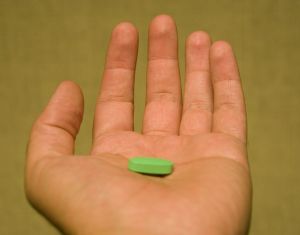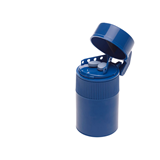Experts advise a fluid chaser of at least 100ml and to stay upright for some time after taking medication. This will help prevent pill oesophagitis, the inflammation and potential ulceration which may occur when a pill becomes stuck in the oesophagus.
"The biggest risk factor for pill oesophagitis is not taking medication correctly," explains Dr Robyn Laurie, anatomical pathologist at Dorevitch Pathology.
"It’s relatively easy for the pills to become stuck without adequate water to wash them down and the benefit of gravity to help the process. The elderly are also at risk as they often have poor oesophageal motility and may take a lot of medications.
"The most commonly implicated drugs in the elderly are non-steroidal anti-inflammatory drugs, potassium chloride and quinindine sulphate which may also cause a stricture in the oesophagus," says Dr Laurie. "Post-menopausal women and others with osteoporosis who take biphosphonates, and adolescents and young adults who take doxycycline for acne, are also at a higher risk."
The symptoms of pill oesophagitis are often non-specific such as chest pain, difficulty swallowing or pain when swallowing, so a doctor may request an endoscopy and biopsy. It’s the interpretation of the biopsy tissue by a pathologist that can confirm the diagnosis.
"Pathologists are able to tell if it’s inflammation and ulceration caused by a medication as opposed to a malignancy or just reflux," says Dr Laurie. "And the good news is that most cases of pill oesophagitis-related ulcerations heal in a matter of days once the drug is stopped without any need for medical therapy."
Experts advise a fluid chaser of at least 100ml and to stay upright for some time after taking medication. This will help prevent pill oesophagitis, the inflammation and potential ulceration which may occur when a pill becomes stuck in the oesophagus.
"The biggest risk factor for pill oesophagitis is not taking medication correctly," explains Dr Robyn Laurie, anatomical pathologist at Dorevitch Pathology.
"It’s relatively easy for the pills to become stuck without adequate water to wash them down and the benefit of gravity to help the process. The elderly are also at risk as they often have poor oesophageal motility and may take a lot of medications.
"The most commonly implicated drugs in the elderly are non-steroidal anti-inflammatory drugs, potassium chloride and quinindine sulphate which may also cause a stricture in the oesophagus," says Dr Laurie. "Post-menopausal women and others with osteoporosis who take biphosphonates, and adolescents and young adults who take doxycycline for acne, are also at a higher risk."
The symptoms of pill oesophagitis are often non-specific such as chest pain, difficulty swallowing or pain when swallowing, so a doctor may request an endoscopy and biopsy. It’s the interpretation of the biopsy tissue by a pathologist that can confirm the diagnosis.
"Pathologists are able to tell if it’s inflammation and ulceration caused by a medication as opposed to a malignancy or just reflux," says Dr Laurie. "And the good news is that most cases of pill oesophagitis-related ulcerations heal in a matter of days once the drug is stopped without any need for medical therapy."
The full article can be found in the current edition of ePathWay.



